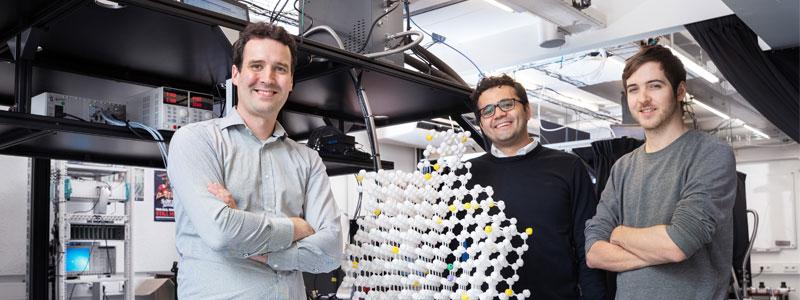
Researchers at QuTech, a collaboration of TU Delft and TNO, have developed a new magnetic quantum sensing technology that can image samples with atomic-scale resolution. It opens the door towards imaging individual molecules, like proteins and other complex systems, atom by atom.
Magnetic Resonance Imaging (MRI) uses the fact that many atomic nuclei have a property called spin. Atomic nuclei behave like little magnets that generate tiny magnetic fields, which can be detected using antennas.
Magnetic imaging is non-invasive, can distinguish different types of atoms, and works under a wide range of conditions, including at room temperature. But current methods are limited to averaging over large volumes with large amounts of atoms, and imaging individual molecules or nano-scale structures is not possible. Researchers at QuTech have now made an important advance towards overcoming that limitation by using NV centres.
To test their method, the researchers applied it to a cluster of 27 carbon-13 atoms in a highly pure diamond. This cluster of spins provides a model system for a molecule. After measuring more than 150 interactions between the nuclei and running an intense numerical reconstruction algorithm, the complete 3D structure was obtained with a spatial precision much smaller than the size of an atom.
The team reports on their results today in Nature as a collaboration of QuTech and Element Six, which grew the ultra-pure diamonds used in the research.
